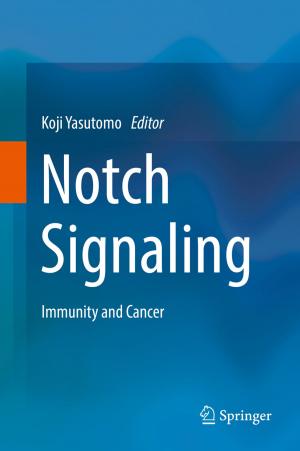Molecular and Therapeutic actions of Thymoquinone
Actions of Thymoquinone
Nonfiction, Health & Well Being, Medical, Medical Science, Pharmacology, Specialties, Oncology| Author: | ISBN: | 9789811088001 | |
| Publisher: | Springer Singapore | Publication: | April 19, 2018 |
| Imprint: | Springer | Language: | English |
| Author: | |
| ISBN: | 9789811088001 |
| Publisher: | Springer Singapore |
| Publication: | April 19, 2018 |
| Imprint: | Springer |
| Language: | English |
Throughout history black seeds, Nigella sativa seeds, have been highly revered for its medicinal properties. Thymoquinone (TQ), an active principle component of the volatile oil of black cumin seeds, is an emerging natural compound with a wide range of medical applications, and has several beneficial pharmacological actions i.e anti-oxidant, anti-diabetic, anti-inflammatory, anti-microbial, anti-tumor, anti-mutagenic, anti-epileptic, hepatoprotective, neuroprotective, and nephroprotective. As such, it is important to move TQ from the bench to bedside. This book illustrates the therapeutic importance of TQ, offering a detailed account of some of its molecular and therapeutic properties, and discussing in depth its anti-diabetic, anti-cancer, anti-oxidant, anti-inflammatory, anti-microbial, anti-epileptic and hepatoprotective actions. Lastly, the book examines the future prospects of TQ research and its use as a pharmaceutical.
Throughout history black seeds, Nigella sativa seeds, have been highly revered for its medicinal properties. Thymoquinone (TQ), an active principle component of the volatile oil of black cumin seeds, is an emerging natural compound with a wide range of medical applications, and has several beneficial pharmacological actions i.e anti-oxidant, anti-diabetic, anti-inflammatory, anti-microbial, anti-tumor, anti-mutagenic, anti-epileptic, hepatoprotective, neuroprotective, and nephroprotective. As such, it is important to move TQ from the bench to bedside. This book illustrates the therapeutic importance of TQ, offering a detailed account of some of its molecular and therapeutic properties, and discussing in depth its anti-diabetic, anti-cancer, anti-oxidant, anti-inflammatory, anti-microbial, anti-epileptic and hepatoprotective actions. Lastly, the book examines the future prospects of TQ research and its use as a pharmaceutical.















